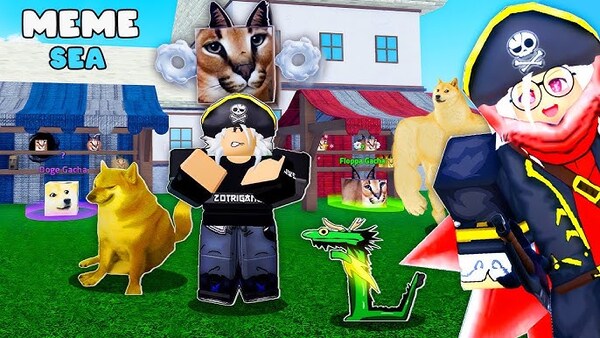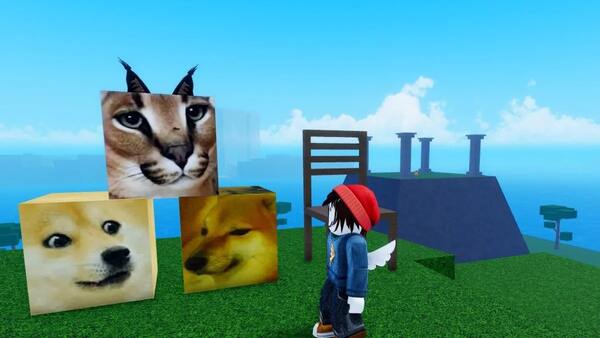In the digital age, memes have become a fundamental aspect of internet culture, shaping communication, humor, and social commentary. With their rapid spread and adaptability, memes can sometimes feel like an overwhelming sea of content. This guide will help you navigate the “Meme Sea” by breaking down the process of creating, sharing, and understanding memes. Whether you’re a meme novice or looking to refine your meme game, this article provides practical tips and insights to help you ride the waves of meme culture.
Understanding Memes
Before diving into the mechanics of creating and sharing memes, it’s crucial to understand what memes are and how they function. A meme is a piece of content—usually an image, video, or phrase—that spreads rapidly online, often with slight variations. The core idea behind memes is their ability to communicate shared experiences or cultural references in a humorous or insightful manner.
Memes often rely on a combination of humor, relatability, and timing. They can serve various purposes, from simple entertainment to more profound social commentary. Understanding these elements will help you grasp how to effectively engage with and create memes.
Choosing the Right Meme Format
Choosing the appropriate meme format is crucial for effective communication. Meme formats vary widely, from classic image macros to video memes and text-based memes. Each format has its strengths and suits different types of messages.
Image Macros
Image macros are one of the most popular meme formats. They typically feature a recognizable image with overlaying text that delivers a punchline or commentary.
Video Memes
Video memes often involve short clips from movies, TV shows, or user-generated content that are edited to create a humorous or relatable message.
Text-Based Memes
Text-based memes rely solely on written content to convey their message. This format can include humorous observations, puns, or quotes.
Finding Inspiration
Inspiration is key to creating engaging memes. The best memes often come from current events, popular culture, or personal experiences. Here’s how you can find inspiration for your memes:
Trending Topics
Keep an eye on trending topics and hashtags on social media platforms. These can provide a wealth of ideas for timely and relevant memes.
Popular Memes
Look at existing popular memes for inspiration. Observe the format, structure, and themes that resonate with audiences.
Personal Experiences
Drawing from your own experiences can lead to unique and relatable memes. Think about everyday situations that others might find amusing or insightful.
Creating Your Meme
Once you’ve decided on a format and found your inspiration, it’s time to create your meme. This process involves selecting images, writing text, and ensuring your meme is visually appealing and easy to understand.
Choosing Images
Select images that are clear and convey the intended emotion or message. You can use free image repositories or create your own visuals.
Writing Text
Your text should complement the image and enhance the humor or message. Keep it concise and impactful.
Design Tips
Ensure that your meme has a clean and visually appealing design. Use contrasting colors for text and background to enhance readability.
Sharing Memes Effectively
Once your meme is created, sharing it effectively is the next step. The success of a meme often depends on how and where it’s shared.
Social Media Platforms
Different social media platforms have their own cultures and audiences. Tailor your meme for each platform’s format and user expectations.
Timing
Timing is crucial for meme virality. Share your meme when it’s most relevant to current events or trending topics to maximize engagement.
Engagement
Engage with your audience by responding to comments and participating in discussions related to your meme. This can help boost visibility and interaction.
Analyzing Meme Trends
Staying informed about meme trends can help you stay relevant and creative. Analyze trending memes to understand what resonates with audiences and why.
Trend Analysis Tools
Use tools like Google Trends, social media analytics, and meme databases to track the popularity and evolution of memes.
Audience Feedback
Pay attention to audience feedback and engagement metrics. This can provide insights into what types of memes are most effective and why.
Avoiding Common Mistakes
While creating memes can be fun, it’s important to avoid common pitfalls that can hinder their effectiveness or lead to negative consequences.
Misinterpreting Trends
Ensure that your memes align with current trends and cultural contexts. Misinterpreting trends can lead to confusion or backlash.
Overuse of Formats
Avoid overusing specific meme formats, as this can lead to fatigue and reduced engagement. Fresh and diverse content keeps audiences interested.
Insensitivity
Be mindful of the potential for your memes to be interpreted as offensive or insensitive. Aim for humor that is inclusive and respectful.
Legal and Ethical Considerations
Creating and sharing memes also comes with legal and ethical considerations. It’s important to understand the implications of using copyrighted material and to respect the rights of others.
Copyright Issues
Using copyrighted images or content without permission can lead to legal issues. Consider using royalty-free or Creative Commons licensed material.
Ethical Considerations
Ensure that your memes do not perpetuate harmful stereotypes or spread misinformation. Responsible meme creation promotes positive and constructive discourse.
Evolving with the Meme Culture
Meme culture is ever-evolving, with new formats and trends emerging regularly. Staying adaptable and open to change is crucial for remaining relevant in the meme landscape.
Learning and Adapting
Continuously learn about new trends and formats. Adapt your meme creation strategies to align with shifting cultural and digital landscapes.
Community Involvement
Engage with meme communities and forums to stay updated on emerging trends and network with other meme creators. This can provide valuable insights and collaboration opportunities.
Conclusion
Mastering the art of memes involves understanding their core elements, selecting the right formats, and effectively creating and sharing content. By staying informed about trends, avoiding common mistakes, and adhering to legal and ethical guidelines, you can navigate the meme sea with confidence and creativity. As meme culture continues to evolve, staying adaptable and engaged with the community will ensure your place in this dynamic and ever-changing landscape.
In summary, mastering memes requires understanding their essence, choosing the right formats, finding inspiration, and sharing effectively. Stay informed, adaptable, and respectful for success in the meme sea.





